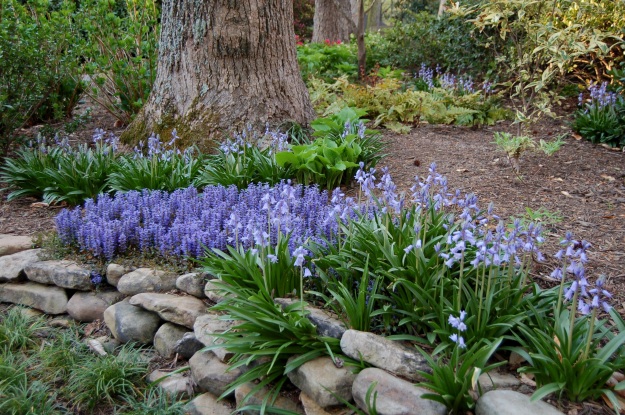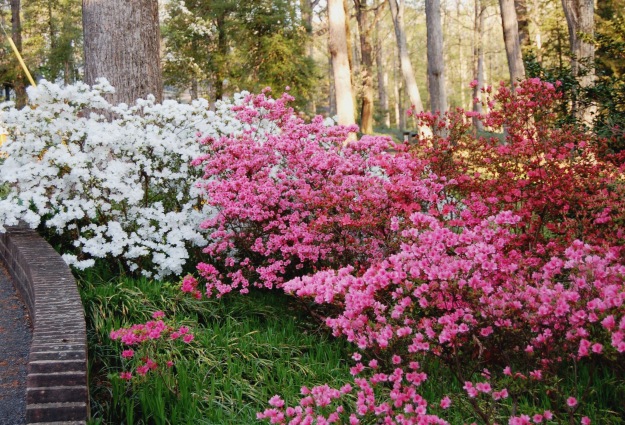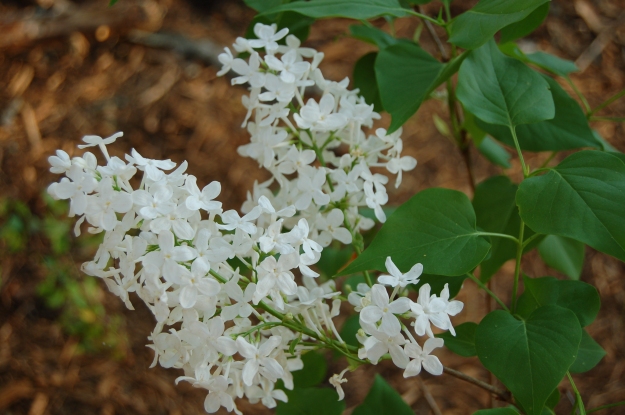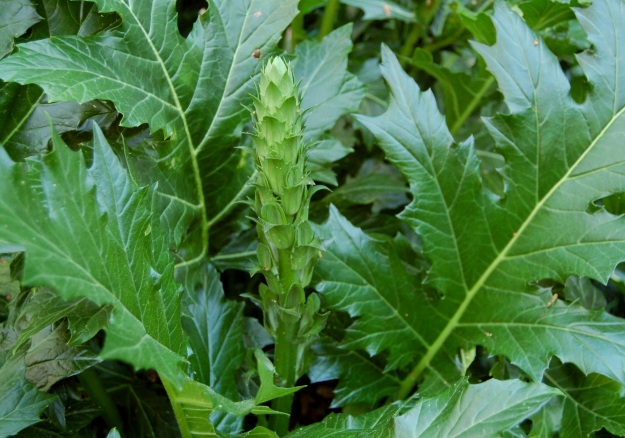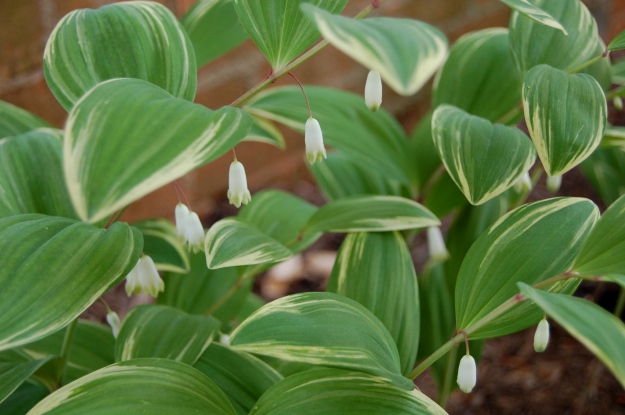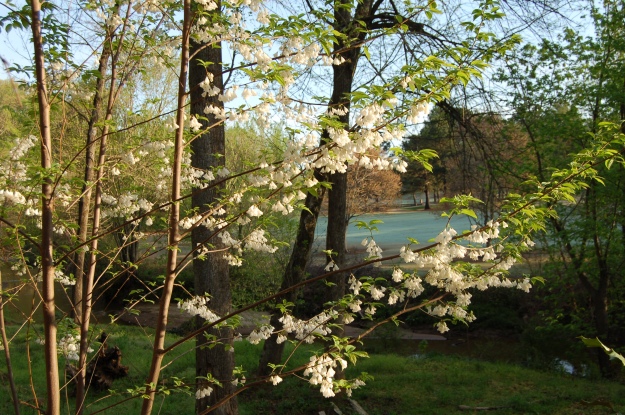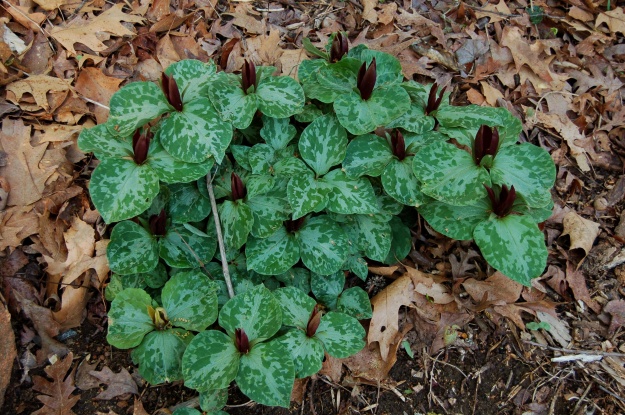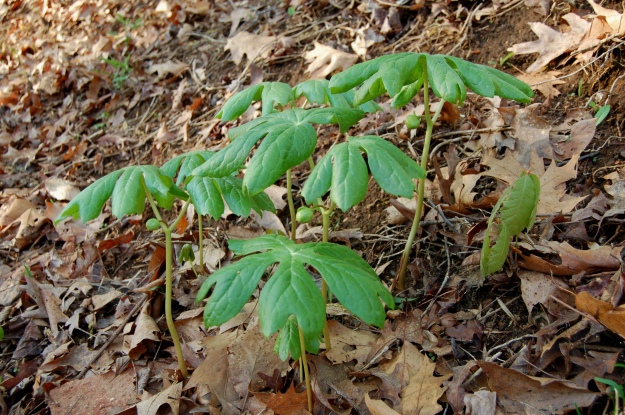The Upstate was plagued in 2016 with spring windstorms, summer drought, and an extended hot and dry autumn. Unfortunately, it looks like 2017 might prove equally unkind. A mild January and warm February stimulated an early spring that was squelched in March by the return of winter. In the past week we’ve seen a low of 23 F (-5 C) and a high of 86 F (30 C), a difference of 63 degrees in just a few days. Then, on Tuesday evening, mighty thunderstorms swept across our region, pelting some areas with 2 inches of hail and others with nearly 4 inches of rain.
So, in my shady garden, where spring is the main event, the azaleas droop with brown flowers and there will be no blooms on the bigleaf hydrangeas (H. macrophylla) this year. (Sigh.)
Thank goodness there is joy to be found in the woodland garden, where a group of “rescued” sweet Betsy trilliums (T. cunneatum) are thriving.

Sweet Betsy trillium (T. cunneatum) moved from a nearby area.
Moved just 2 years ago from a property being bulldozed for construction, the plants are already beginning to spread. Trilliums reproduce vegetatively from small rhizome offshoots, as well as by seeds. When seeds mature, they attract ants and yellow jackets to a lipid-rich food body (elaiosome) attached to their seed coat. Ants move the seeds short distances and yellow jackets disperse them further afield.
Here is another happy surprise.

More Sweet Betsy.
This naturally occurring patch of sweet Betsy has more than doubled in size since 2011. In fact, this group of trilliums is the very first I found here, surviving under a cloak of English ivy, which spurred our determination to clear invasive plants and reestablish natives. Six years ago there were 18 flowers. When this photo was taken a few days ago, I counted 38!
Typically, the flowers of bloodroot are finished by now, but not this year.

Bloodroot (Sanguinaria canadensis)
Bloodroot is one of the most cherished signs of early spring. The flowers, partially encircled by a single unfolding leaf, appear well before the trees leaf out. Can you see the pollen on the lower petals? Pollen eating bees and flies are attracted to the nectarless flowers, but if cross-pollination doesn’t occur within 3-4 days, then the anthers bend toward the stigma and shower it with pollen.
Look what else is waking.

Mayapple (Podophyllum peltatum)
Burned by frost, but with a bloom in the making. Thank goodness all parts of this plant, except its fleshy fruit, are highly poisonous. The local deer family, a doe with twin yearlings, was back for a browse yesterday.
In the garden, we can’t predict what tomorrow might bring…but fingers crossed for more good things ahead.






















































